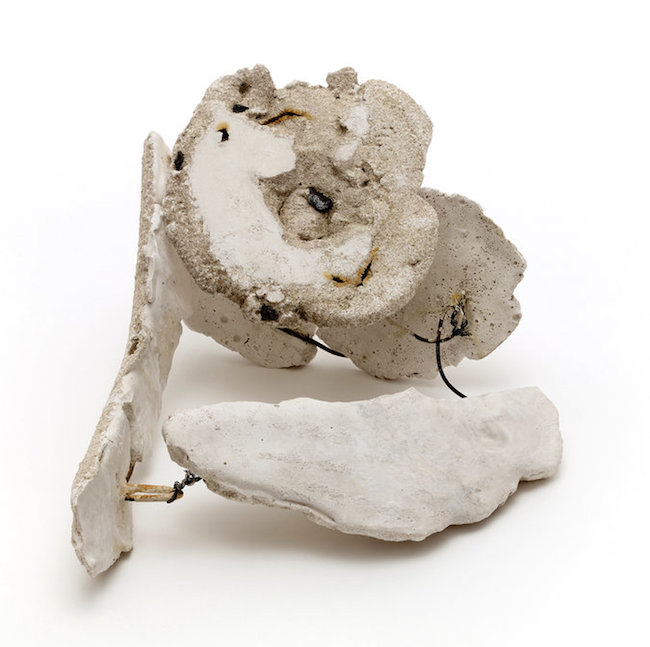DALLAS — In a parallel universe Jackson Pollock actually wanted to be a sculptor.
In an essay quoted by ArtNews, Eileen Costello wrote that Pollock originally moved to New York “thinking he would become a modern-day Michelangelo.” Not everyone gets what they want, however, and Pollock went on to be a powerhouse abstract expressionist painter, one of the most important artists of the last century. Oh well.
Above image: Jackson Pollock, Untitled, 1956; wire, sand, plaster and gauze. The sculpture acquired by the Dallas Museum of Art.
He still nurtured his love for sculpture. ArtNet states that he crafted copper clay bowls while being treated for alcoholism. He also did studies, destroying most of his creations. Because of that, just six of his sculptures survived and three are ceramic. They resurfaced a few years ago at a joint show at the Matthew Marks Gallery, Jackson Pollock & Tony Smith: Sculpture (September 7 — October 27, 2012). Now, the Dallas Museum of Art has acquired another: Untitled (1956). The only other untitled Pollock work resides at the Museum of Fine Arts, Houston, according to the New York Times.
Dallas senior curator of contemporary art Gavin Delahunty told the NYT, “It’s a once in a lifetime opportunity.” He said he asked collectors Gayle and Paul Stoffel for help in purchasing the sculpture from the Tony Smith estate and the collectors were immediately on board.

Jackson Pollock, Number 3, 1952. Photograph courtesy of Dallas Museum of Art.

Jackson Pollock, Untitled (ca. 1949-50). Ceramic. Photograph courtesy of the Dallas Museum of Art.
The sculpture is made from sand, plaster, wire and gauze. Pollock created the work in a single weekend while staying at the home of friend Tony Smith. As with the copper bowls and is china painting on ceramics,, the sculpture feels therapeutic; Pollock made it while struggling with depression. If you know its backstory the skeletal work starts to look like an omen. It’s believed that this was one of the artist’s final works before he died in a drunk driving car crash in 1956.

Jackson Pollock, Untitled, ca. 1949-50. Ceramic.
It’s probably idle conjecture to guess how Pollock’s paintings and sculptures talk to each other. One has to also take into account the fact that he only made 12 over the course of his life. It’s also very possible that he never wanted this work to see the light of day, since he deliberately destroyed most . Certainly there is a visual connection with another sculpture Untitled (ca. 1949-50) and his painting Number 3 (1952). It looks as though the substantive black paint in Number 3 finally managed to leap off the canvas, onto the clay and completed its transition into the third dimension.
Do you love or loathe the work contemporary ceramic art above? Let us know in the comments.

Does anyone know of an expert in Pollack sculpture? I may have one.
I don’t see any comprehension of space in Pollack’s sculptures and, for me, sculpture only has life in it’s relationship to actual space. In his paintings, Pollock and other two-D artists create a virtual space and work within it, the virtual space being the dimensions of the canvas or paper. Their work has only to respond to that factitious space. Dealing with real space is a very different matter.
I see Pollock’s tactile response to materials and his struggle to express himself in 3D.
He did it well.
When you think about Pollock’s method of painting, very physical, very body-intensive, sculpture makes perfect sense. I’ve always thought his paintings needed to be experienced in the flesh, not through photos, which do them no justice. Just as one feels his experience of painting when looking at his paintings first-hand, one feels his experience and engagement with the medium in his sculpture, even from these photos.